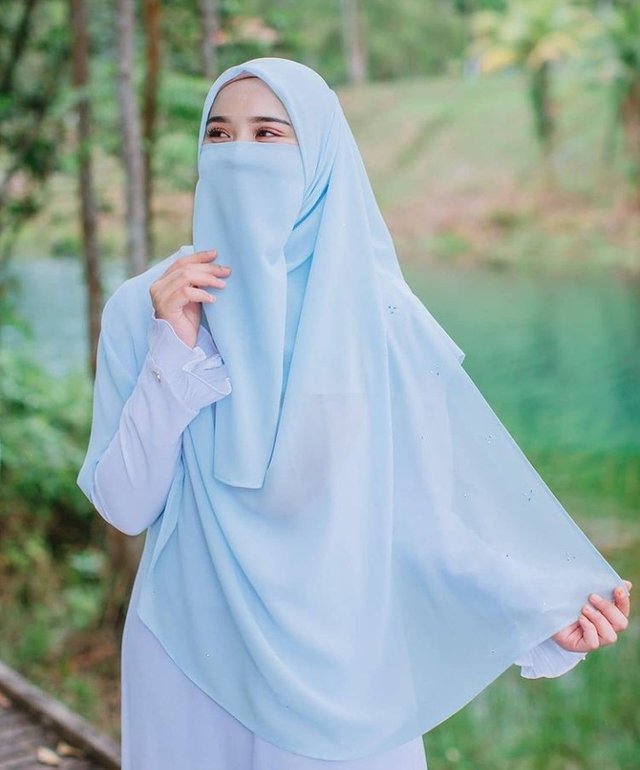Muslim Women and Veils
The phenomenon of the veil (niqab) in the view of sharia is a matter that is still being debated among Ulama. Some say it is mandatory, some say sunnah and some have the view that the veil (niqab) is only obligatory for women who wear it, it can cause slander and even threaten its safety. In addition, there are also some opinions saying that the hijab is only intended for the prophet's wives by looking at the context of his Asbab Nuzul, not for all Muslim women as argued by Al-Mahlab, Ibn Batthal and Ibn Juzayy al-Kalbi.
The term veil comes from the Persian 'chador' which means 'tent'. In Iranian tradition, the veil is a garment that covers a woman's entire limb from head to toe. Indians, Pakistanis and Bangladeshis call it purdah, while Bedouin women in Egypt and the Gulf region call it Burqu (who covers his face specifically).
The veil in the Big Indonesian Dictionary means a cloth covering the head or face (for women). In Arabic it is called Niqāb. Niqāb is the plural form of Nuqūb. In the Al-Munawwir dictionary Niqāb means in the Lisaanul Arabic dictionary, the word Niqāb is a cloth covering the face for women so that only the eyes are visible.
In the Indonesian context, the veil is a "foreign" thing in people's lives. The schools used in Indonesia tend to hold that the face is not aurat that must be covered. This is because culture in Indonesia is more famous for its hospitality, mutual cooperation and social life. Thus, there is no barrier that divides men and women in the midst of community life. So that the opinion of the majority of fiqh scholars has been embedded and shared in the soul of Indonesian society.
This issue is interesting, because various points of view can be proposed to analyze it. Some approach it from the viewpoint of fiqh. There are also those who try to understand it by seeing it as a sociological symptom of Muslim society. This paper intends to read this controversy by approaching the relationship between religion and culture.
In my capacity as a teacher of Islamic studies in tertiary institutions, I always try to explain Islam as an object of scientific study in various ways. One of them is by dividing the dimensions of Islam into three, namely: a) Islam as a basic doctrine which includes aqidah, sharia and morality; b) Islam as a scientific discipline; and c) Islam as a socio-cultural practice and expression. These are only categories for easy assessment. Don't be used as an effort to reduce Islam.
In the third dimension, Islam as a practice and socio-cultural expression means that the main teachings of Islam which are permanent, eternal, universal, and cosmo-political can actually manifest themselves in different social and cultural expressions when having various dialectics Public.
Jurisprudence scholars still have different views regarding the law on the use of the veil which is related to the issue of the limits of the genitals for women. Apart from Muslim women, groups that have long cultivated the use of the veil are Heredi Jews, Yamani Jews, and Egyptian Coptic Christians. Thus, the question arises; Is the veil a Muslim clothing, or is it the clothing of pre-Islamic Arab women which was adopted by some Muslim women.
That's enough from my writing today. Thank you for your attention, hopefully my writing can motivate all of you. Until we meet again in another post that is no less interesting.
Regard
@mdj25
